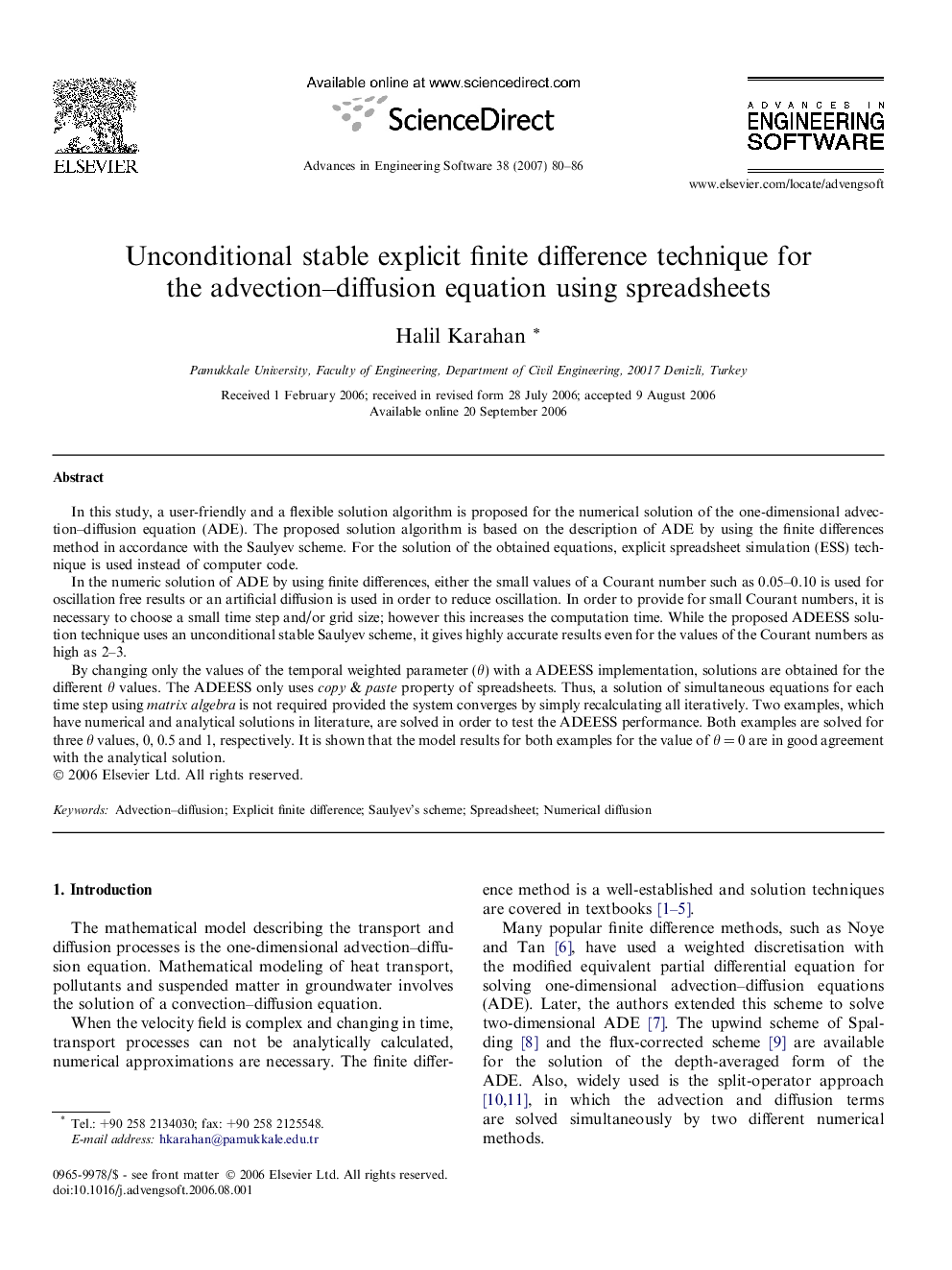| کد مقاله | کد نشریه | سال انتشار | مقاله انگلیسی | نسخه تمام متن |
|---|---|---|---|---|
| 566740 | 876023 | 2007 | 7 صفحه PDF | دانلود رایگان |

In this study, a user-friendly and a flexible solution algorithm is proposed for the numerical solution of the one-dimensional advection–diffusion equation (ADE). The proposed solution algorithm is based on the description of ADE by using the finite differences method in accordance with the Saulyev scheme. For the solution of the obtained equations, explicit spreadsheet simulation (ESS) technique is used instead of computer code.In the numeric solution of ADE by using finite differences, either the small values of a Courant number such as 0.05–0.10 is used for oscillation free results or an artificial diffusion is used in order to reduce oscillation. In order to provide for small Courant numbers, it is necessary to choose a small time step and/or grid size; however this increases the computation time. While the proposed ADEESS solution technique uses an unconditional stable Saulyev scheme, it gives highly accurate results even for the values of the Courant numbers as high as 2–3.By changing only the values of the temporal weighted parameter (θ) with a ADEESS implementation, solutions are obtained for the different θ values. The ADEESS only uses copy & paste property of spreadsheets. Thus, a solution of simultaneous equations for each time step using matrix algebra is not required provided the system converges by simply recalculating all iteratively. Two examples, which have numerical and analytical solutions in literature, are solved in order to test the ADEESS performance. Both examples are solved for three θ values, 0, 0.5 and 1, respectively. It is shown that the model results for both examples for the value of θ = 0 are in good agreement with the analytical solution.
Journal: Advances in Engineering Software - Volume 38, Issue 2, February 2007, Pages 80–86